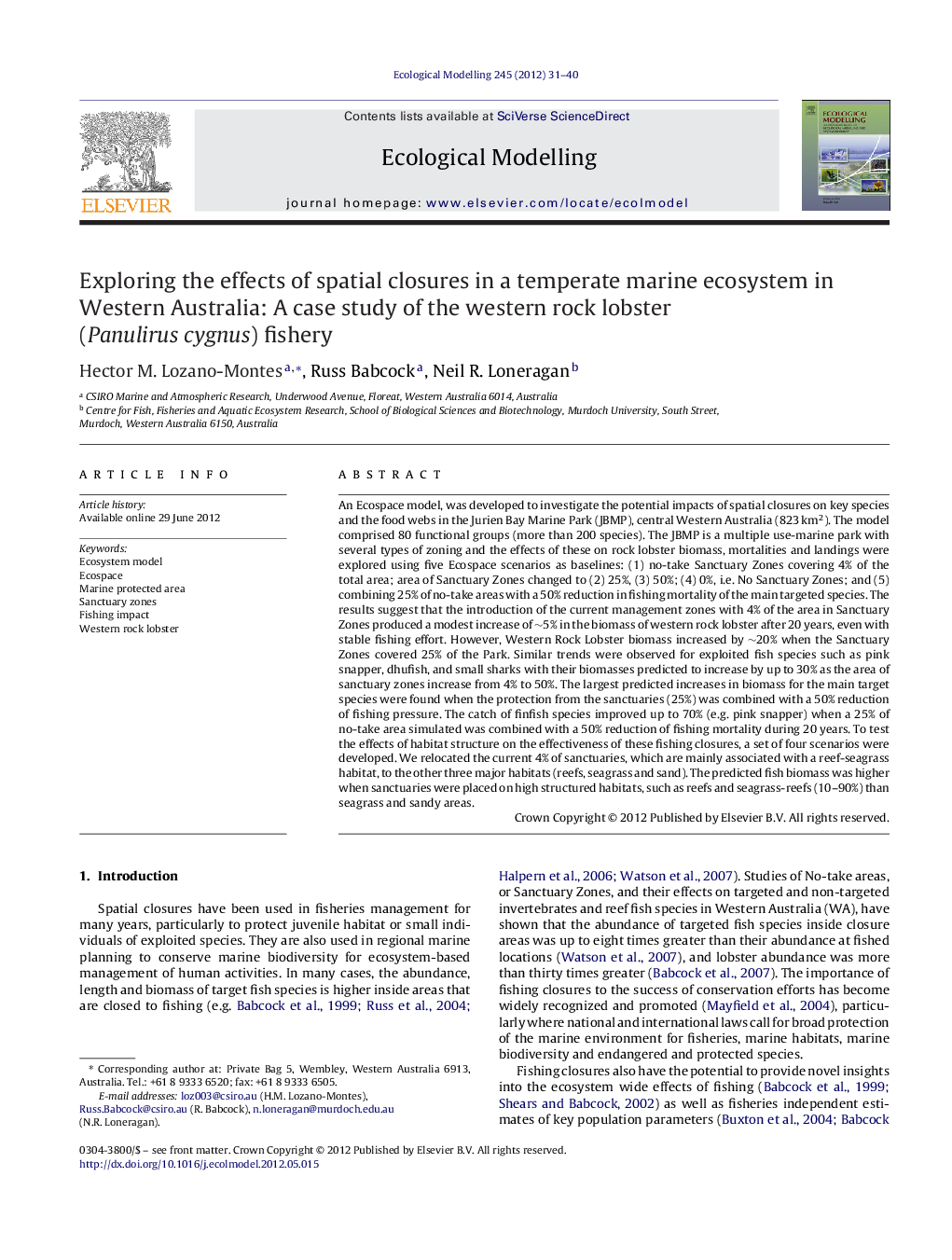| Article ID | Journal | Published Year | Pages | File Type |
|---|---|---|---|---|
| 4376308 | Ecological Modelling | 2012 | 10 Pages |
An Ecospace model, was developed to investigate the potential impacts of spatial closures on key species and the food webs in the Jurien Bay Marine Park (JBMP), central Western Australia (823 km2). The model comprised 80 functional groups (more than 200 species). The JBMP is a multiple use-marine park with several types of zoning and the effects of these on rock lobster biomass, mortalities and landings were explored using five Ecospace scenarios as baselines: (1) no-take Sanctuary Zones covering 4% of the total area; area of Sanctuary Zones changed to (2) 25%, (3) 50%; (4) 0%, i.e. No Sanctuary Zones; and (5) combining 25% of no-take areas with a 50% reduction in fishing mortality of the main targeted species. The results suggest that the introduction of the current management zones with 4% of the area in Sanctuary Zones produced a modest increase of ∼5% in the biomass of western rock lobster after 20 years, even with stable fishing effort. However, Western Rock Lobster biomass increased by ∼20% when the Sanctuary Zones covered 25% of the Park. Similar trends were observed for exploited fish species such as pink snapper, dhufish, and small sharks with their biomasses predicted to increase by up to 30% as the area of sanctuary zones increase from 4% to 50%. The largest predicted increases in biomass for the main target species were found when the protection from the sanctuaries (25%) was combined with a 50% reduction of fishing pressure. The catch of finfish species improved up to 70% (e.g. pink snapper) when a 25% of no-take area simulated was combined with a 50% reduction of fishing mortality during 20 years. To test the effects of habitat structure on the effectiveness of these fishing closures, a set of four scenarios were developed. We relocated the current 4% of sanctuaries, which are mainly associated with a reef-seagrass habitat, to the other three major habitats (reefs, seagrass and sand). The predicted fish biomass was higher when sanctuaries were placed on high structured habitats, such as reefs and seagrass-reefs (10–90%) than seagrass and sandy areas.
► The Ecospace model was used to evaluate the effects of different management options, such as spatial closures on fished species (e.g. western rock lobster, dhufish, pink snapper) and the trophic interactions in the ecosystem. ► The fishing closures in Jurien Bay can lead to increments in the abundance of exploited resources, while without some closures, the biomass of all key target species was predicted to decline under the current levels of fishing. ► The changes in biomass resulting from the spatial closures, evaluated by Ecospace, varied greatly between species. They were much more effective for relatively sedentary species such as dhufish and pink snapper than migratory species such as sharks. ► The largest increases in biomass for exploited species was predicted when spatial closures were combined with additional fisheries management controls in fished areas.
